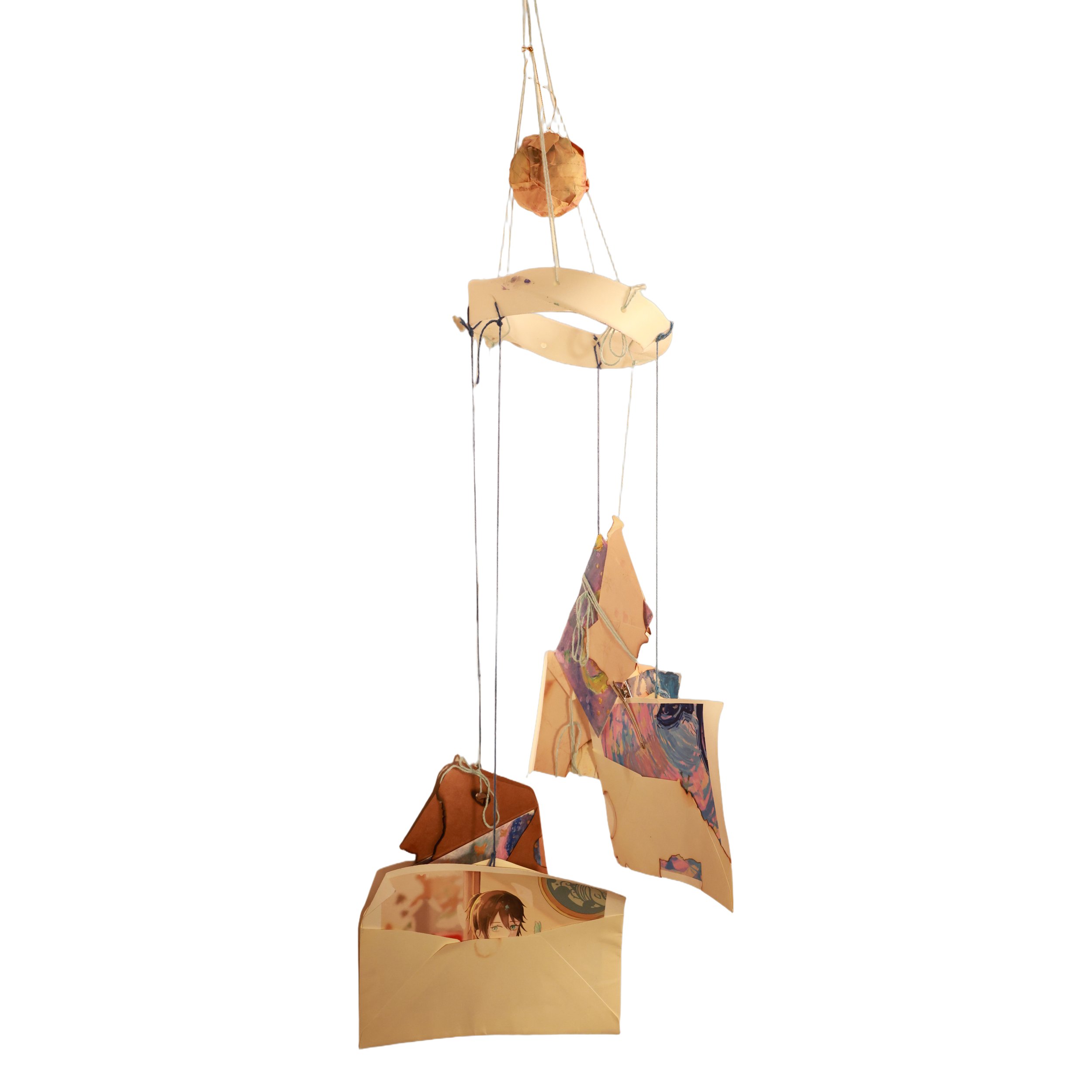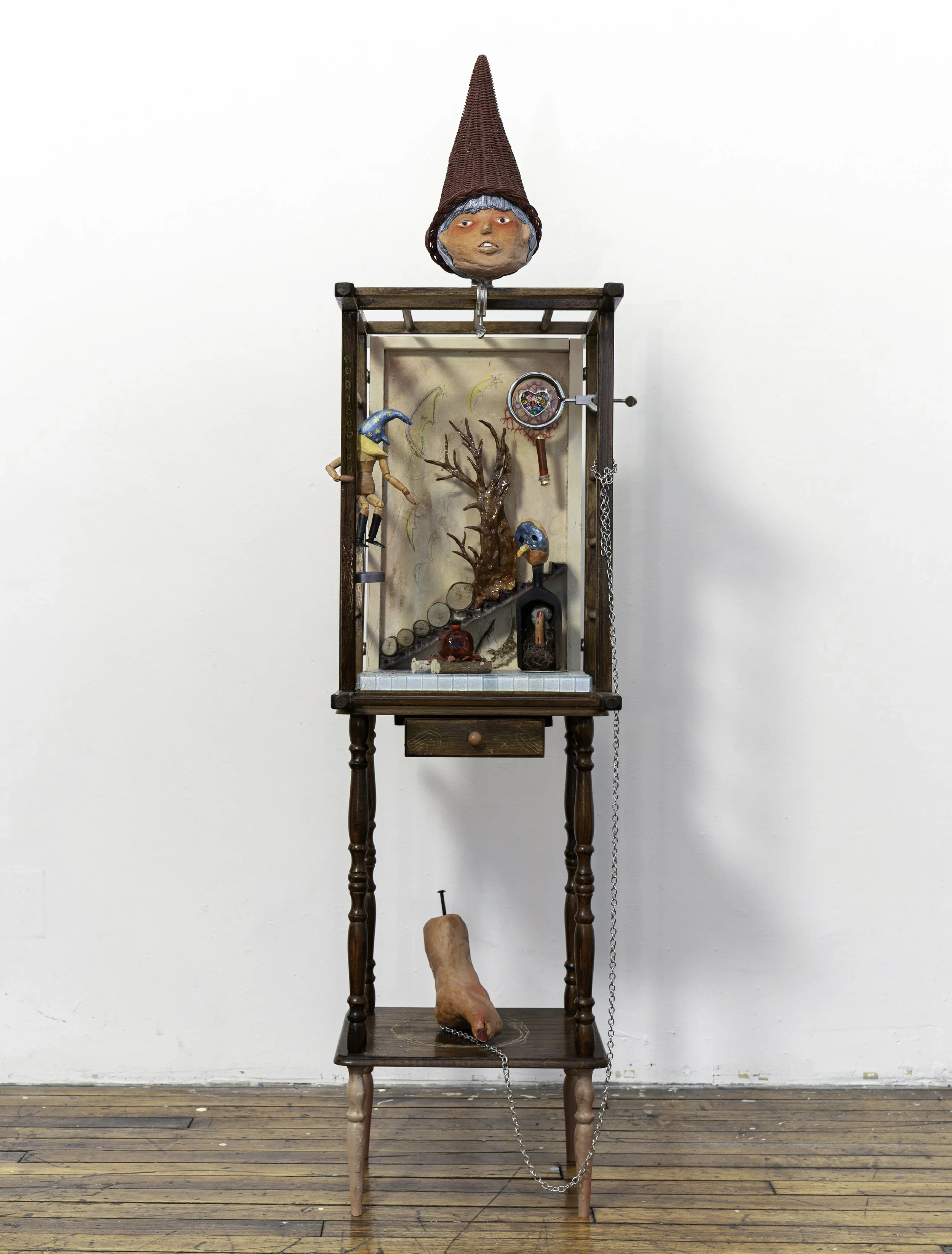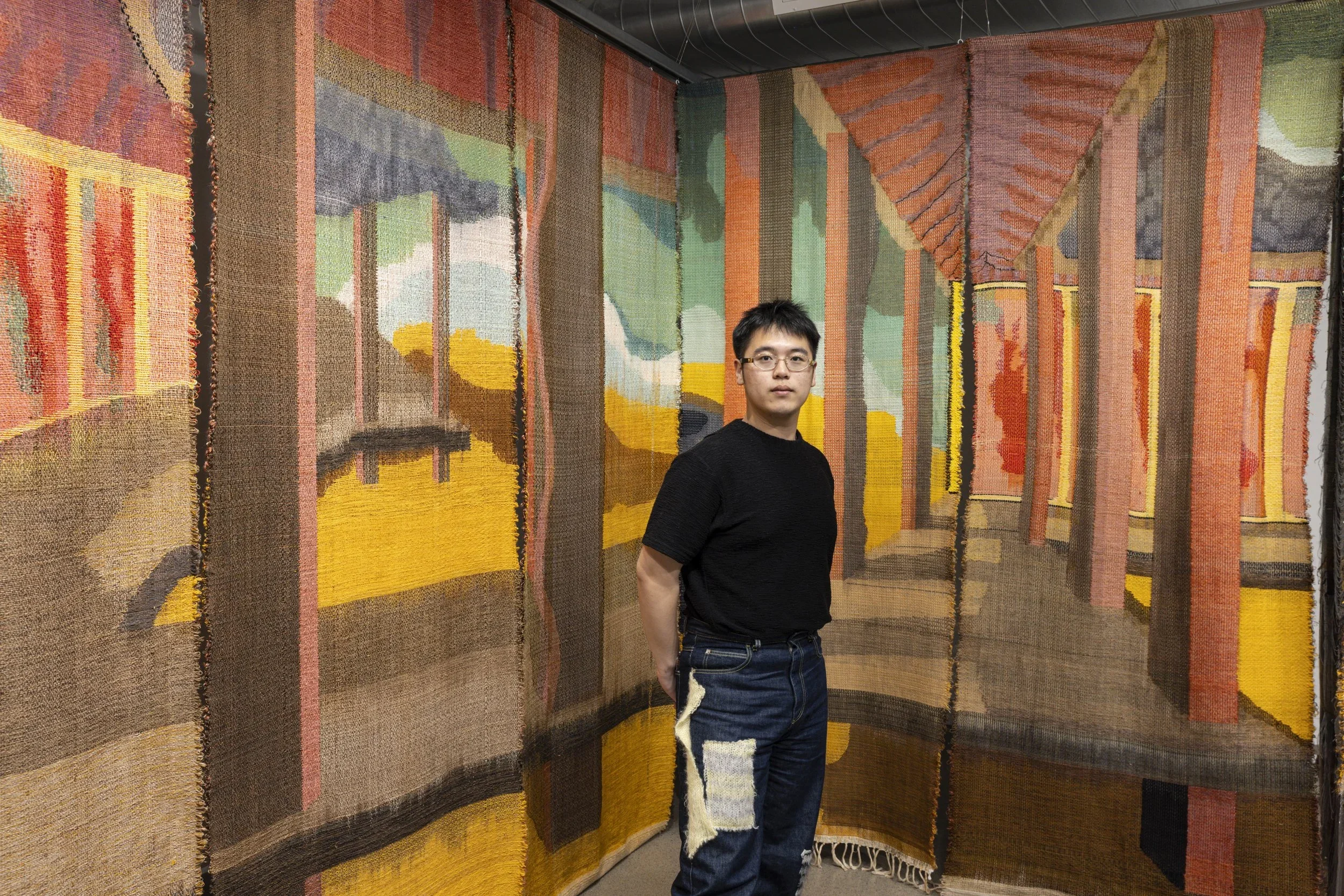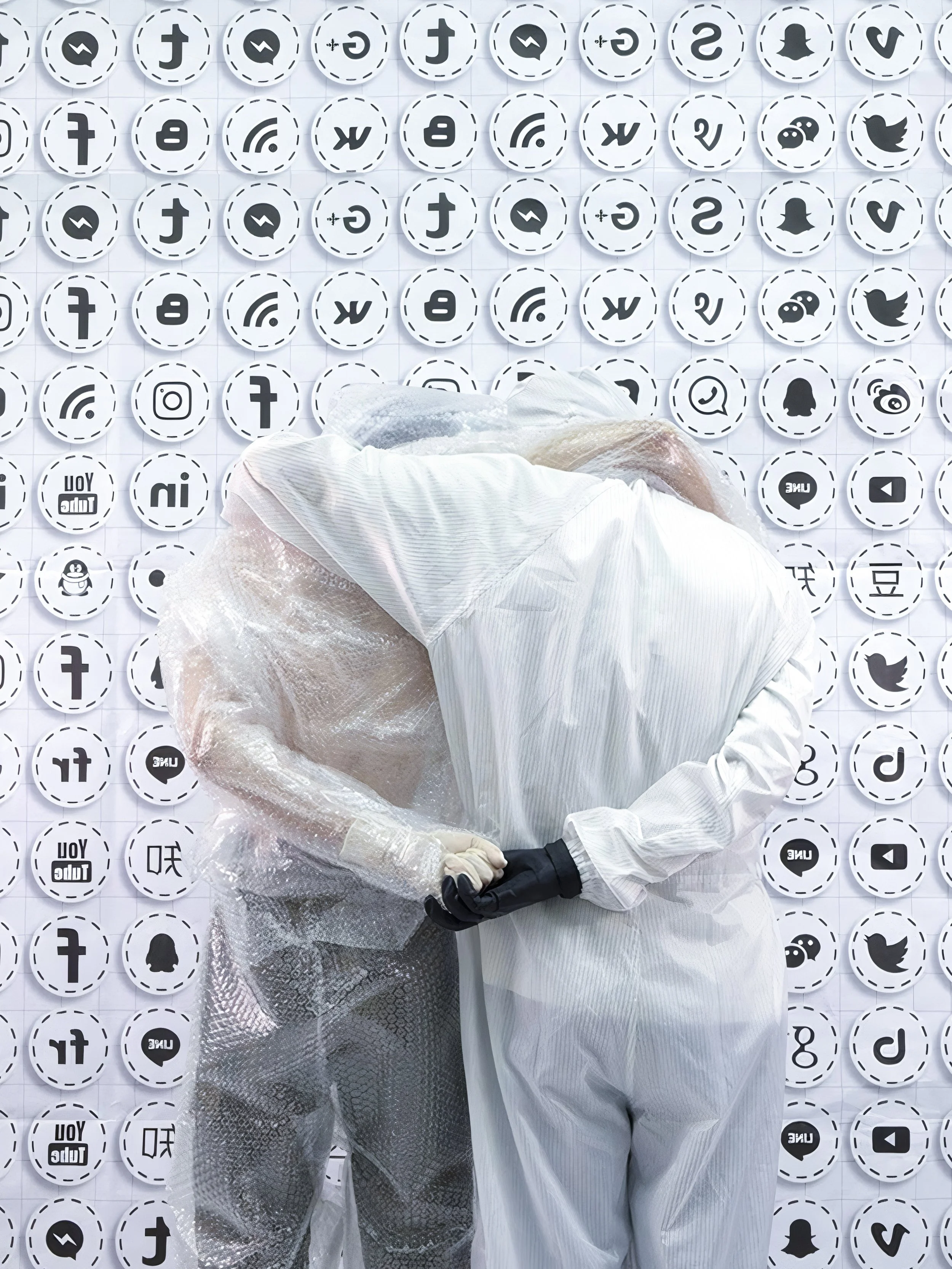10 Questions with Xinyi Yu
Xinyi Yu is currently pursuing a BA degree in Illustration and Visual Media at the London College of Communication (LCC), University of the Arts London (UAL), where he continues to refine his artistic voice and technical expertise.
As a transgender male artist, Yu explores themes of identity, transformation, and the intersection of personal and societal narratives through his innovative art practice. Drawing deeply from his lived experiences, he creates works that reflect on transgender life, memory, and the journey of self-reflection. His art spans a variety of mediums and techniques, seamlessly incorporating symbolic imagery to convey complex ideas and inspire profound reflection.
In 2024, his work was showcased in Workopen at the Barbican Centre, demonstrating his unique perspective and creative vision. That same year, he received the prestigious Gold Award at the Andersen International Art Prize in Denmark, further establishing his reputation as a pioneering artist. His artistic achievements have also been recognized internationally with a Silver Award from the MUSE Design Awards and another Silver Award from the Good Design Awards in the United States.
Dedicated to pushing the boundaries of creativity, Yu continues to explore the dynamic interplay between identity and innovation, striving to inspire dialogue and foster meaningful connections through his thought-provoking art.
Xinyi Yu - Portrait
ARTIST STATEMENT
This project by Xinyi Yu investigates the intersection of past and future LGBTQ+ identities through a deeply personal lens, grounded in the artist’s own experiences and memories. In the context of societal oppression and hegemony perpetuated by vested interests, the artist reflects on a profound personal loss, one that has haunted them for six years.
During high school, letters served as the primary means of communication. However, over time, these letters have become fragmented in the artist’s memory. Yu chose paper as the medium for this work, transforming it into a perpetual motion machine. Drawing inspiration from the Möbius strip—a symbol of infinity, continuity, and the interweaving of past and future—Yu’s work explores the notion that while physical distance is not great, the differing planes on which individuals exist make reunion impossible.
Through the reinterpretation of memory, time, and loss via symbolic structures, this project reflects on how personal histories and experiences intertwine with broader societal narratives, challenging conventional linear perceptions of space and identity.
TO SAFIRE, Mixed media, 17x17x60 cm, 2024 © Xinyi Yu
INTERVIEW
First of all, can you tell us a bit about your background? What led you to study Illustration and Visual Media at LCC?
I was raised largely by my grandmother, as my parents were too busy with work to be present during my upbringing.They expressed love through material means, never really seeing me as who I truly was. As a result, I often felt invisible, merely a projection of what a “good child” should be within East Asian expectations. This disconnection led me to search for a space where I could be seen and heard—and that space, for me, was art.
Choosing to study Illustration and Visual Media at LCC came from a desire to explore visual storytelling in a more expansive and experimental environment. It offered the freedom I needed to transform personal experiences into something tangible and communicable.
How did your personal journey influence your decision to pursue art, and how does it shape your creative vision?
Growing up as a gender minority and being emotionally neglected in my family, I learned to find silence more familiar than expression. However, during high school, I experienced a rare and genuine connection—a senior who wrote letters to me regularly and quietly cared for me throughout three entire years. This brief but profound love became a lifeline.
Although this relationship later broke down due to bullying and my own fear and avoidance, it planted a seed that still grows within my art. Creating allows me to revisit and reimagine those moments, to transform grief into meaning. My artistic vision is deeply rooted in the belief that art can make pain visible—and perhaps even redeem it.
TO SAFIRE, Mixed media, 17x17x60 cm, 2024 © Xinyi Yu
Could you walk us through your creative process? How do you usually begin a new project or idea?
My process often begins with a feeling—something unresolved, unspoken. I write, sketch, and gather fragments of symbols until a visual form starts to emerge. I’m drawn to metaphors and textures, and I choose materials based on the emotional temperature of the project. Each piece is like writing a letter—addressed to a past memory, a lost connection, or sometimes just to myself.
Your work often explores identity and transformation. Why are these themes important to you, and how do they evolve in your practice?
My identity has always existed on the margins—queer, trans, emotionally overlooked. These themes aren’t just artistic; they’re personal. I use art to reclaim agency over who I am, and to reframe narratives where I was once voiceless. Transformation, to me, is not just about healing; it’s about rewriting reality in a way that centers survival and softness at once.
You work across a range of mediums. What draws you to use specific materials or techniques in a project?
Each medium speaks with its own voice. I use paper when I want to express fragility or memory, fire when exploring destruction or rebirth, thread when I need to bind things that are falling apart. I select materials intuitively, depending on what the story demands—it’s less about style, more about emotional resonance.
TO SAFIRE, Mixed media, 17x17x60 cm, 2024 © Xinyi Yu
TO SAFIRE, Mixed media, 17x17x60 cm, 2024 © Xinyi Yu
In your recent project inspired by the Möbius strip, you explored memory and loss using paper. What inspired this particular approach?
The Möbius strip fascinated me because of its endless loop—it echoed the way memory recurs, uninvited, unresolved. I used paper to represent both the ephemerality and the persistence of memory. Much of this project was inspired by the letters I received during high school—folded pieces of someone’s care that kept reaching me across silence. Through folding and tearing, I wanted to capture the act of remembering and forgetting as simultaneous processes.
How do symbolism and visual metaphors help you convey complex personal and societal narratives in your work?
I find it difficult to narrate trauma directly, so symbols are my language. Objects like envelopes, leaves, or flames become vessels for emotion. They allow me to speak without exposing, and to invite the viewer into a dreamlike space where interpretation becomes part of the experience. Symbolism helps me say what otherwise feels unspeakable.
Do you see your work as a form of activism or storytelling, or perhaps something else entirely?
My work is quiet, but I believe there’s resistance to being visible—especially when you come from silence. I don’t think of my work as overtly political, but I do see it as a form of rescue. Sometimes, I’m rescuing my younger self. Sometimes, I’m writing back to the one who once loved me so patiently. Through art, I try to build a world where that love, even if unresolved, continues to matter.
TO SAFIRE, Mixed media, 17x17x60 cm, 2024 © Xinyi Yu
What was it like to exhibit your work at the Barbican Centre and receive international recognition this year? Has it influenced your direction moving forward?
To exhibit at the Barbican Centre and receive international attention felt less like a moment of glory and more like a soft acknowledgement that my story was worth listening to. It encouraged me to continue walking this path—to tell the stories that hurt, that heal, and that haven’t yet been spoken.
And lastly, what are you currently working on, and what would you like to explore in your future projects?
I’m currently working on a project built around the imagery of letters, fire, and falling leaves. These symbols are deeply personal—tied to the high school senior who used to write to me during a time when I was emotionally isolated. His letters were my only connection to the outside world, and though that relationship ultimately ended in heartbreak, it became the emotional core of my practice.
This project is my attempt to answer those unsent letters—to return the love I once couldn’t hold. It explores the metaphor of sending and receiving memory as both a burden and a gift. Each piece is like a stamp on a feeling never fully delivered. Going forward, I hope to continue expanding this visual language, telling stories of unresolved intimacy with quiet tenderness.
Artist’s Talk
Al-Tiba9 Interviews is a promotional platform for artists to articulate their vision and engage them with our diverse readership through a published art dialogue. The artists are interviewed by Mohamed Benhadj, the founder & curator of Al-Tiba9, to highlight their artistic careers and introduce them to the international contemporary art scene across our vast network of museums, galleries, art professionals, art dealers, collectors, and art lovers across the globe.




















